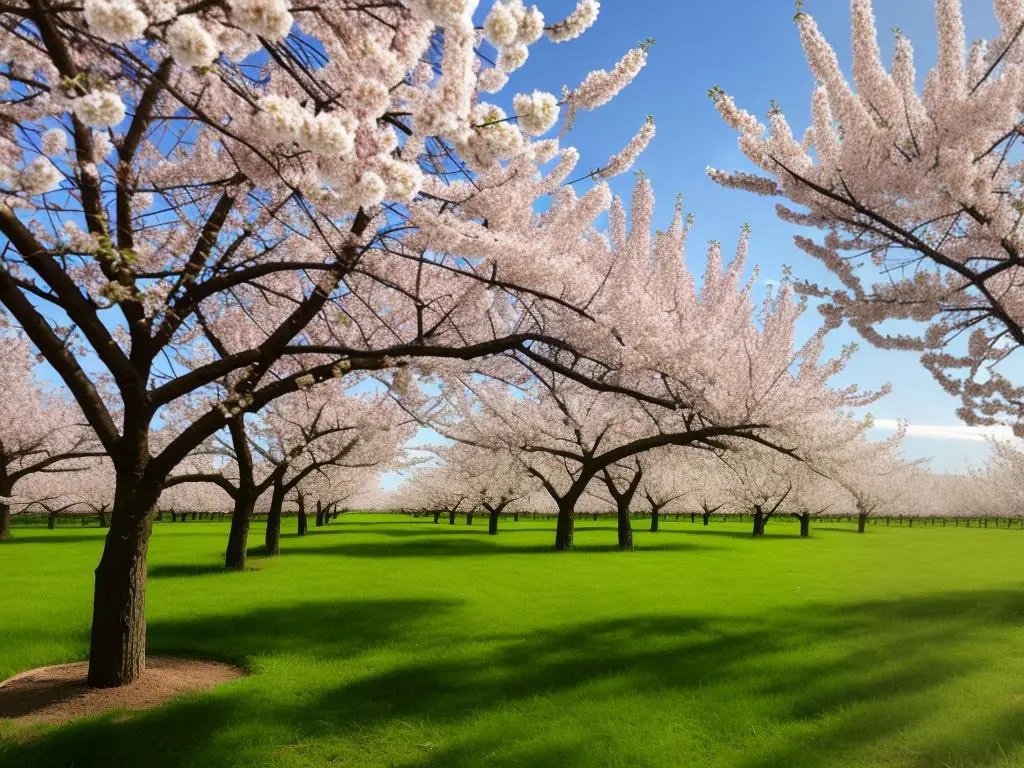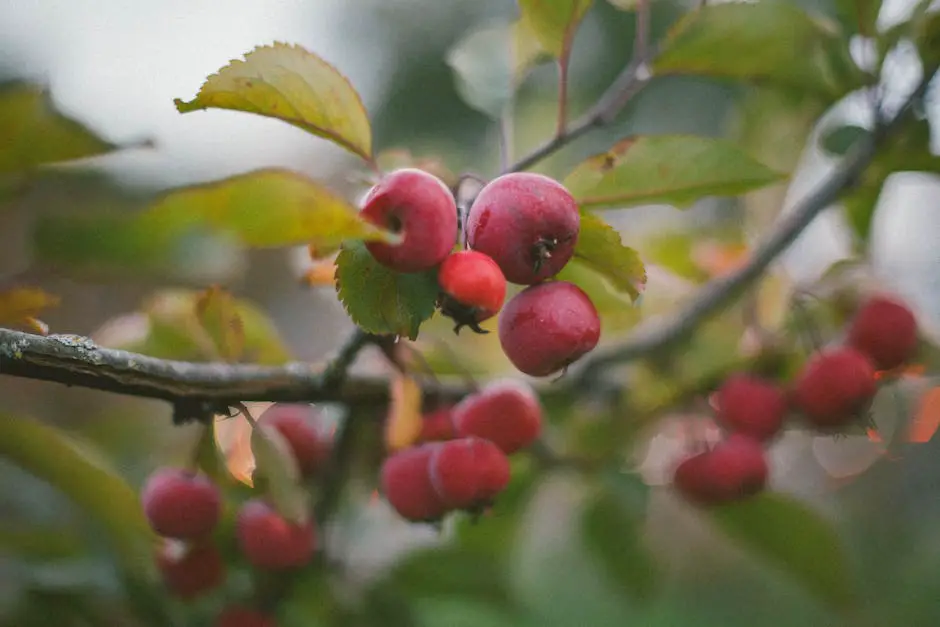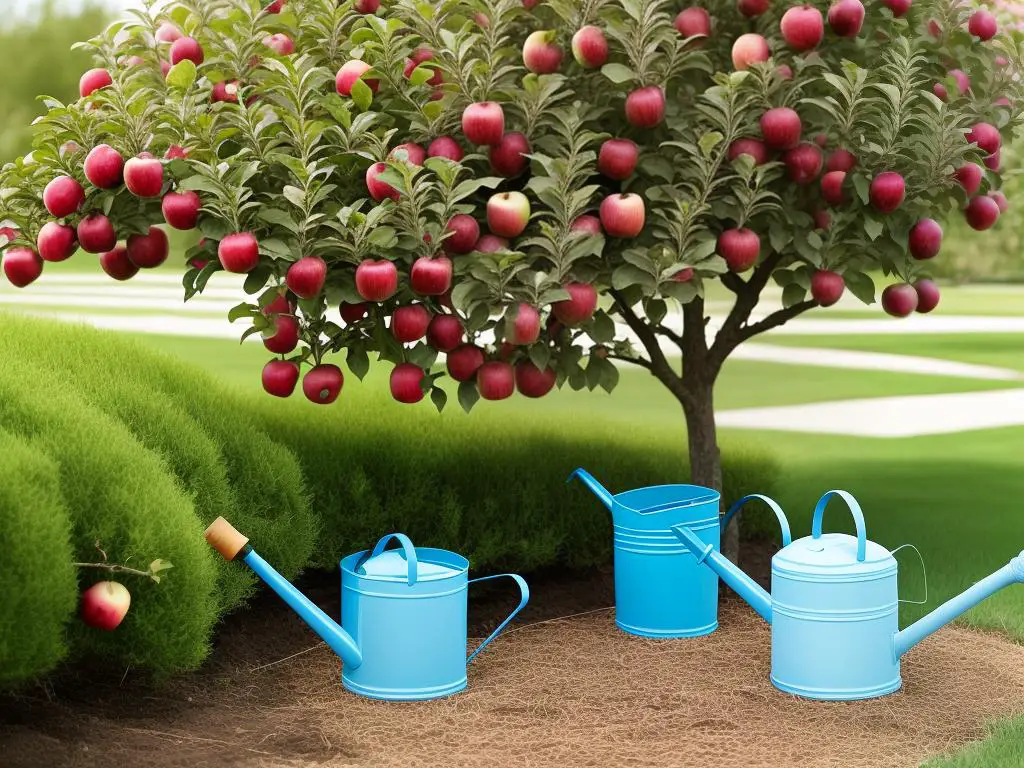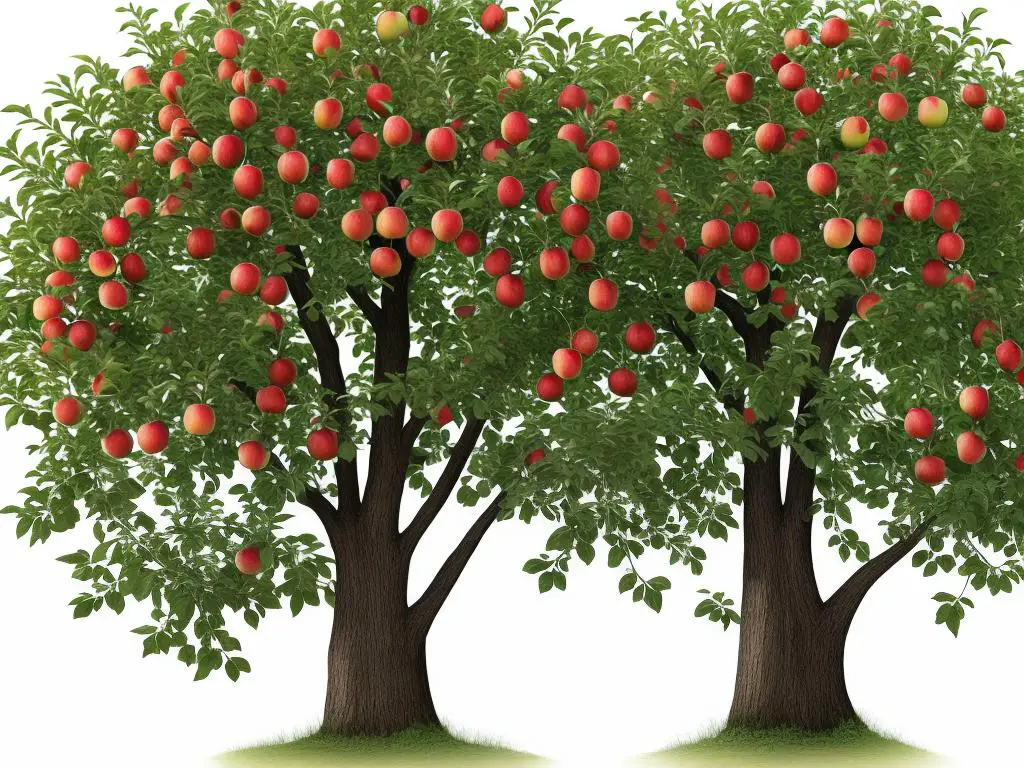Apple trees are the very emblem of fruitfulness and a quintessential part of American orchards and backyards. With approximately 7,500 varieties worldwide, these hardy trees offer a wealth of delicious and nutritious fruits. However, achieving a healthy and fruitful apple tree is more than just a matter of planting and watering. It requires a basic understanding of apple tree biology, the right tools, and properly timed and executed cutting techniques. This article delves into these core aspects and offers insights into the best practices in apple tree cutting.
Understanding Apple Trees
Apple trees
Apple trees, scientifically known as Malus domestica, make up some of the most widely cultivated fruit trees in the world. Originating from Central Asia, they have adapted to a plethora of environments and climates, making them a prevalent species in many countries. There are over 7,000 known varieties of apple trees, each with its unique characteristics including size, color, taste, and growth habits.
Types of Apple Trees
Certain types of apple trees, such as the winter banana apple and McIntosh target specific conditions to thrive. For instance, McIntosh apple trees prefer cooler climates and thrive in regions like New York, Michigan, and Canada. On the other hand, varieties like the Granny Smith are more suited for warmer climates.
Sunlight and Soil
Apple trees are known to have a high demand for sunlight, requiring around six hours of direct, unfiltered sunlight each day. This helps in photosynthesis, the process that enables the tree to produce the energy needed for growth and fruit production. The ideal soil pH for apple trees lies between 6 and 7; however, they can tolerate a variety, provided it is well-draining. When it comes to water, apple trees prefer medium soil moisture levels.
Pruning Apple Trees
When taking care of an apple tree, one of the most crucial practices is pruning, commonly known as apple tree cutting. This practice involves the careful removal of specific parts of the plant, such as branches, buds, or roots. Proper pruning is vital in maintaining a healthy apple tree and also boosts the tree’s fruit production capacity.
Proper Pruning Techniques
Apple tree pruning is generally conducted during late winter or early spring, before any new growth begins. The objective here is to remove dead, diseased, or broken branches, thin out areas where branches are overcrowded and enable sunlight to penetrate into the tree, promoting healthy growth. Using clean and sharpened cutting tools is necessary as it prevents the spread of diseases. The cut made should be just above a bud that faces the direction in which you want the new branch to grow.
Understanding the Significance of Apple Tree Cutting
Proper management and maintenance of apple trees through strategic cutting is critical for promoting growth, enhancing the tree’s health, and boosting fruit yield. Nevertheless, overly aggressive pruning in a single session may prove detrimental to the tree, potentially causing stress which could result in reduced fruit production. As such, arborists generally recommend not removing more than a third of the tree’s total height within a single year. Apple tree cutting is thus a paramount component of successful agriculture, demanding a nuanced comprehension of the tree’s life cycle, growth patterns, and overall biology for optimal results.

When and Why to Cut an Apple Tree
Procedure and Purpose of Cutting an Apple Tree
The process of cutting an apple tree is not only vital for its health but also imperative for maximizing fruit yield. Various factors may necessitate the cutting of an apple tree. For example, the removal of deceased, diseased, or damaged branches may be required to curb the spread of disease or ward off pests. Concurrently, controlling the size and shape of apple trees by pruning them back may be necessary to foster even, visually engaging growth patterns. Hence, adopting proper apple tree cutting practices is crucial for healthy, aesthetically appealing, and fruitful apple trees.
Importance of Cutting
Cutting an apple tree also increases fruit yield and quality. Pruning, a form of controlled cutting, encourages the growth of spurs, which are the tree’s fruit-producing structures. By selectively removing some of the tree’s branches, more resources can go to these spurs, which in turn can enhance fruit size, sweetness, and color.
Best Time to Cut
The best time to cut an apple tree largely depends on the specific goal of the cutting activity. If the aim is to control the tree’s growth, cutting is best done in late winter or early spring before new growth starts. This is because the wounds inflicted by the cutting will heal more quickly due to the tree’s accelerated growth during these seasons. Cutting can also be done in late summer or early fall when the tree is in a slower growth phase, thereby reducing the likelihood of disease transmission through the wounds. This is particularly important when removing diseased branches to prevent the spread of pathogens.
Pruning for Fruit Production
However, to enhance fruit production, pruning is best done once the tree enters dormancy in late fall or winter. This is when the tree’s energy is primarily stored in the roots rather than in leaf production. By doing so, the tree can direct its stored energy toward fruit production the following spring.
Combination Cutting
To improve the tree’s structure or shape, or to remove certain limbs, it might be necessary to do a combination of both winter and summer cutting. Winter cutting promotes vigorous growth of new shoots in the direction the cut was made, while summer cutting suppresses growth and is used to slow or redirect the growth of certain branches.
Proper Use of Apple Tree Cutter
Using an apple tree cutter properly is crucial for maintaining the health and productivity of the tree. Keeping the cutter’s blade sharp and disinfected can help prevent the transmission of diseases and enable clean cuts that heal quickly. The cutter should be used to make cuts that are flush with the branch collar – the swollen area where the branch joins the trunk or a larger branch – to promote faster healing and prevent disease entry.
Final Words
Every snip made to an apple tree implies modifying the tree’s form, potentially impacting its state of health, and influencing its capacity to produce fruit. For this reason, it’s of utmost importance to deliberate over each cut before forging ahead.

Choosing the Right Tools
Optimal Tools for Trimming Apple Trees
Appropriate care and attention of apple trees necessitate the right instruments. Selecting suitable tools not only fosters the trees’ health and yield, but also ensures your safety.
Secateurs
Beginning with, a pair of high-quality secateurs is essential. These tools carry out neat cuts on smaller branches up to 3/4 of an inch in diameter. You can find two main variants: anvil secateurs and bypass secateurs. Anvil versions consist of a blade cutting against a flat surface, much like a knife cutting onto a board. Despite the relative ease of use, they may squash stems rather than executing a clean cut. Bypass secateurs, contrarily, employ two rounded blades that pass each other, much like a pair of scissors. For most trimming jobs, these are preferable as they provide a cleaner cut and cause less damage to the tree.
Pruning Saws and Chainsaws
For those larger branches, you’ll need either a pruning saw or a chainsaw. Pruning saws handle branches up to three inches in diameter, but you’ll need a chainsaw for anything bigger. Use chainsaws carefully, though, as they can be more dangerous.
Loppers with Long Handles
You’ll also need long-handled loppers. These tools are perfect for accessing larger branches (up to 2 inches in thickness) within the tree. Long handles provide leverage, making it less strenuous to cut through thick branches, and the expandable design can reach those difficult areas.
Pruning Poles
For those out-of-reach places, a pruning pole may be requisite. These extendable poles equip a saw and a lopper, enabling you to trim branches out of your straight reach. They need careful control but are safer options than clambering up the tree or a ladder.
Precautions for Safety
A crucial point to remember when using these tools is safety. Safeguard your hands by wearing gloves, and use safety glasses to shield your eyes from falling debris. If you’re operating a chainsaw, don’t forget to put on safety chaps and a hard hat.
Upkeep
It’s important to keep your tools in top shape. Rusty or blunt tools can detriment the tree and increase the difficulty of cutting. Regular cleaning of tools with warm, soapy water and thorough drying can help avert rust. Sharpen the blades as necessary to keep your cuts clean and effortless.
Wrap Up
To sum up, every tool has its strengths and limitations, but they all have essential roles to play in the pruning and care of apple trees. The selection often depends on the specific task, safety concerns, and your comfort and skill with the tool. Regular upkeep contributes to the tools’ efficiency and lifespan.

Proper Cutting Techniques
Comprehending the Significance of Appropriate Pruning Techniques
Consistent and proper pruning is a vital routine in the care of an apple tree. Correct cutting techniques are integral in maintaining the health of the tree, maximizing yield, and enhancing its visual appeal. Through improved air circulation and light penetration, pruning helps keep diseases and pests at bay.
Tools Required for Proper Cutting
The tools you’ll need for properly cutting an apple tree are a pair of pruning shears for smaller branches, loppers for branches that are slightly larger, and a pruning saw for the largest branches. Other materials that could be handy include gloves to protect your hands and safety glasses to shield your eyes from falling debris.
When to Cut Your Apple Tree
Knowing when to cut your apple tree is as crucial as knowing how to cut it. The best time for pruning is late winter or early spring, just before the tree begins to bud. Pruning during the dormant season decreases the risk of disease transmission and also allows the tree to focus its energy into new growth when spring starts.
Steps of Cutting an Apple Tree
- Start by removing any dead, dying, or diseased branches. This will prevent the spread of disease and will focus the tree’s energy on healthy growth.
- Prune off branches that cross or rub against each other. These create wounds in the bark, leaving the tree susceptible to disease.
- Cut back any overly vigorous, upright branches that are competing with the central leader, which is the primary vertical stem.
- Trim any branches that are growing downwards, towards the center of the tree, or are parallel to the ground.
- When cutting a branch, make your cut at a 45-degree angle, about 1/4 inch above an outward-facing bud. This encourages growth out and away from the center of the tree.
Care after Cutting
After pruning, you should dispose of the cut branches, especially if they were diseased, to prevent any potential spread. In addition, some apple trees may benefit from a balanced, slow-release fertilizer in the spring to promote recovery and growth.
Proper cutting of your apple tree helps ensure better health for the tree, a higher yield of fruit, and a visually pleasing shape. Proper cutting improves the tree’s overall appearance, helps in maintaining the health of the tree, and prevents many common problems associated with apple trees.
Ensuring Safety During Apple Tree Cutting
Prioritizing your safety is crucial when it comes to cutting an apple tree. To shield yourself from potential injuries caused by flying debris, make sure you wear safety goggles. Hand protection like gloves can also safeguard you from wounds and grazes. Above all, keep a keen eye on your environment as you cut, guaranteeing falling branches don’t result in harm or damage.

Aftercare for Cut Apple Trees
Post-Cutting Care for Apple Trees: A Simple Guide
Following the pruning or cutting of an apple tree, providing it with the right amounts of water and fertilizer plays a crucial role in its recovery and future health. Depending on the tree’s age and weather conditions, it may need watering roughly once a week. Be sure to water deeply but sparingly to encourage a broad root system while preventing root rot and leaf diseases through over-watering.
Adding fertilizers to the care regimen is vital in the post-cutting phase of apple trees. Opt for a well-rounded fertilizer, ideally high in nitrogen, but remember to use cautiously as apple trees can react sensitively. It’s best to use it sparingly to prevent potential damage to the tree’s roots from over-fertilization. A gentle, incremented increase in the dosage as the tree recuperates is a sensible strategy.
Signs of Healing in Tree Pruning Aftercare
Following the pruning of an apple tree, you need to pay attention to the tree’s healing signs. Over time, you should see new bark growing over the cuts. In particular, oozing sap isn’t necessarily a sign of damage or disease and can be part of the healing process.
Another sign of healing is the growth of new shoots near the cut site. While these are generally a good sign, be aware that not all new growth is beneficial. Some might be water sprouts, which grow straight up from the branches and steal nutrients from other parts of the tree.
Potential Risks and When to Seek Professional Help
A cut apple tree, like any pruned tree, faces some potential risks. The most common is infection, which can enter the tree through a cut. Watch for discoloration, unnatural swelling, or unusual growth at the cut site, which can all be possible signs of infection.
In addition, the tree may become structurally unstable if a large limb has been removed. This instability can present a serious risk during high winds or storms. If you’re unsure about any signs or symptoms, reach out to a professional arborist. They can provide a comprehensive health assessment of the tree and inform you about potential risks and necessary treatments.
In Conclusion
The aftercare for cut apple trees is just as crucial as the pruning process itself. Adequate watering, suitable fertilization, and an attentive eye for healing signs and potential risks will ensure your tree’s longevity and productivity after it’s been pruned or cut.

Caring for apple trees post-cutting is as important as the cutting process itself. The practices elucidated in the article, such as using appropriate fertilization methods, observing proper watering techniques, and assessing signs of healing, enhance your apple trees’ chances of thriving and fruiting. Armed with these insights and information, you are now better equipped to maintain the health, growth, and productivity of your apple trees. But do remember, if your apple tree shows signs of disease or severe stress even after practicing these guidelines, consulting with a professional arborist is always the best course of action.

